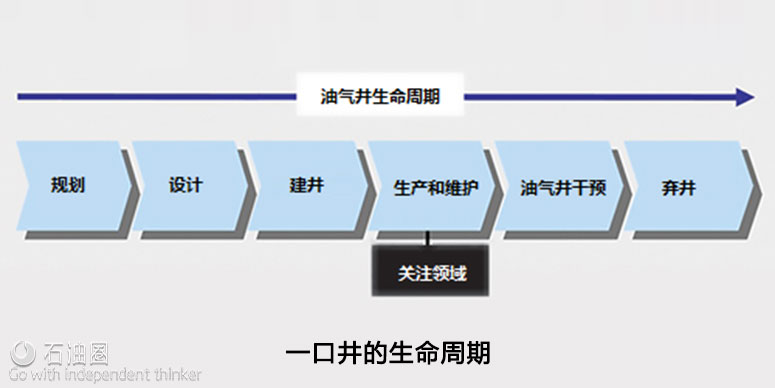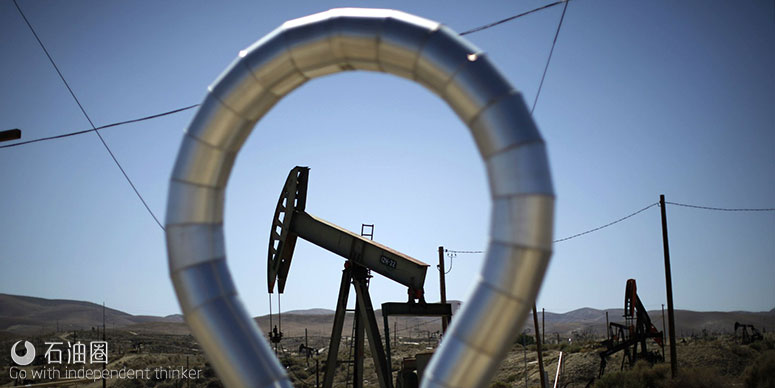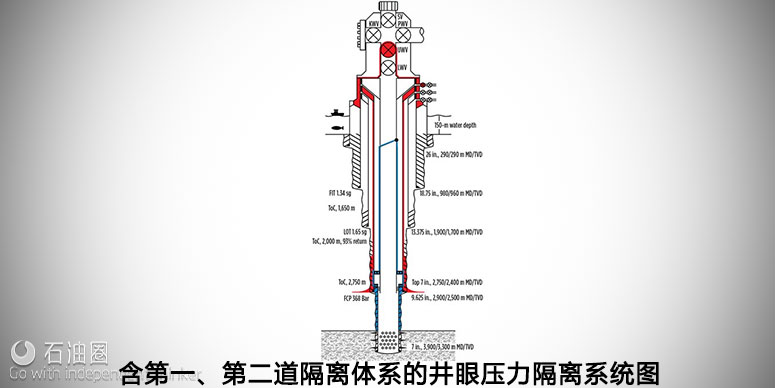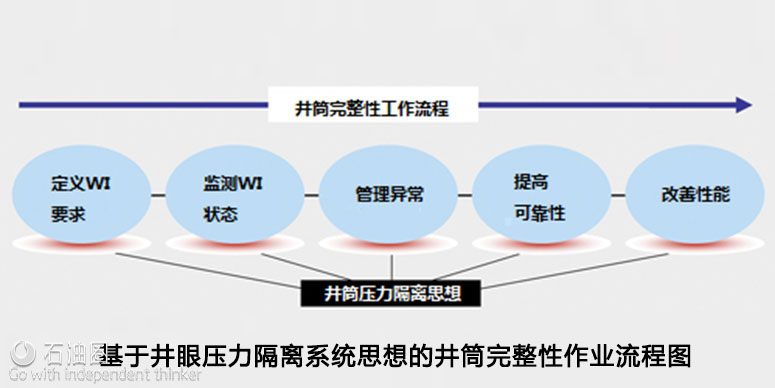Well integrity must encompass the entire life of a well—from its initial construction (planning, drilling, completion and testing), through its producing life (or in injection service), until the well is finally decommissioned and abandoned. This article focuses on WI in production operations and five major trends in managing WI that, the authors believe, will be integral to shaping the future direction of the oil and gas industry. A holistic view is taken that incorporates organizational, workflow (or business process), tools (IT systems), and data and information perspectives. The intent is to provide a high-level survey of industry trends and not delve into specific engineering methodologies or technology. Figure 1 highlights the production operations phase, which is the scope of this article. The selection of this focus area, however, is not intended to diminish the importance of WI outside the scope of production operations.
The increased focus on managing WI is being driven by a heightened awareness—across the industry, regulatory agencies and the general public—of the latent risks and consequences of WI failures. The recent Southern California Aliso Canyon underground storage facility’s gas injection well failure serves as a potent example of the potentially disastrous consequences. The casing failure resulted in a large natural gas release to the atmosphere for over three months, and the temporary relocation of over 10,000 local residents. It represents the largest gas leak in U.S. history, in terms of its environmental greenhouse gas emissions impact.
Defining well integrity ownership. Clear ownership of WI in an organization is increasingly recognized as a requirement for success. When ownership is diffused or ambiguous, everyone—and therefore no one—is truly focused on, or ultimately responsible for, rigorously monitoring and driving improvement in WI across the lifecycle of a well. Establishing clarity of WI ownership is complex, however, due to the diversity of activities and disciplines that interact during the lifecycle of the well.
A good analogy for this is an automobile, owned and operated by someone for personal use. In this scenario, who is accountable for the vehicle’s mechanical integrity? Certainly, the owner/driver plays a role, based on how well, and often, the car is inspected for proper fluid levels, tire pressure, or any apparent mechanical issues. The owner/driver is also responsible for hiring a skilled mechanic to perform any maintenance, and complete repairs or replace any worn-out equipment. The driver’s behavior also makes a difference; a large pothole in the street, for example, could damage or weaken the front-end components and put the integrity of the vehicle at risk.
But what about the role of the car’s manufacturer? The design and manufacturing quality certainly contributes to the vehicle’s safety and performance over its lifecycle. These are beyond the control of the owner/driver, once the decision to purchase the vehicle is made. So, the manufacturer is initially the “integrity” owner, which then transitions to the initial owner, when the vehicle is purchased. Similarly, if the original owner decides to sell or dispose of the vehicle, the subsequent owner(s) may suffer integrity issues that are not of their own making, if the design was flawed or the initial owner failed to maintain or operate the vehicle in a responsible manner.
Thus, in similar fashion to an automobile, multiple parties play a role in ensuring WI in production operations. The primary ownership of WI during the production operations phase moves between the wells and production operations disciplines, depending on the well status and activity at a particular time. Monitoring the well on a day-to-day basis for evidence of WI issues is typically the remit of production operations, with the frontline operators flagging issues that can be observed directly (abnormal pressures, temperatures or leaks), and the production/petroleum engineer (PE) providing surveillance, based on longer-term trends or performance. The PE also typically serves as the liaison with the wells discipline, to communicate and jointly diagnose the issue, taking into account both a downhole and surface facilities perspective. One challenging aspect of this is the dual role for the PE in balancing any conflict of interest between long-term and short-term performance and maintenance of the well.
Adopting a well barrier mind-set. The design, construction and operation of wells specify and incorporate equipment and materials (such as casing, cement, tree and wellhead valves) to isolate the produced or injected fluids from the environment, and provide a pressure containment envelope. The adoption of a well barrier mind-set, as a guiding principle that permeates the design, construction and operation of wells, ensures that WI is being managed systematically. This well barrier concept—articulated in the NORSOK D-010 Well Integrity in Drilling and Well Operations standard, when it was first published in 1986—is a simple, yet powerful, way to visualize and communicate how the individual elements combine together as a system to provide an integral pressure-containing envelope for the well.
So the essence of a well-barrier mind-set is to manage WI from a systems perspective, rather than addressing issues on a component-by-component basis. To visualize this and further reinforce the concept, Fig. 2 illustrates a well barrier diagram that portrays the system by highlighting the primary and secondary pressure-containing envelopes.
This well barrier diagram style complements the more traditional wellbore schematic. The well barrier diagram is analogous to the piping and instrumentation diagram (P&ID) that provides a simplified view of the pressure-containing envelope (e.g. piping and vessels) for production facilities. Creating and maintaining well barrier diagrams, for either individual wells or groups of wells by type (necessary for large populations of well stock), is a work in progress for many operators. Adoption has not been universal, however, with some operators questioning the value relative to the effort required to develop and maintain detailed well barrier diagrams. As with all new methodologies, the relative merit will become clearer over time.
In addition to defining the well barrier envelope, determining the well barrier design, and operating pressure limits and status, are equally important. The maximum, allowable, annulus surface pressure (MAASP) is typically defined, along with the lower operating limit (MOASP), to provide some margin for error, as well as set the pressure levels at which a review of the well condition must be undertaken to determine if any action, such as shutting in the well, is required. The well barrier status is typically defined as either intact, impaired or failed. The well status is defined for both the primary and secondary barriers, with the impairment or failure of one barrier elevating the risk for a potential loss of containment, should the remaining intact barrier fail.
When a well integrity issue, or something unexpected is detected, this well integrity “anomaly” is then reviewed and diagnosed, and any remedial actions are identified and executed. This case-management approach for managing anomalies provides a robust way to continuously monitor for, and effectively respond to, threats to WI as they emerge. Over time, analysis of barrier impairment and failure data can be used to proactively identify root causes of the anomalies and, in turn, develop standardized steps to minimize anomalies and thus enhance reliability. Reporting also can be developed, which clearly communicates the well barrier status, anomaly management effectiveness and other performance management indicators to key stakeholders. Based on this, actions can then be undertaken to improve the overall performance. This workflow, underpinned by adopting a well barrier mind-set, is illustrated in Fig. 3.


 石油圈
石油圈


